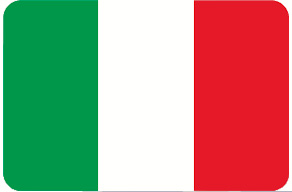
Il complesso in origine era costituito dalla villa, dalle due barchesse e da una chiesetta dove sono sepolti i primi proprietari Valmarana. I proprietari originari furono i Dolfin: i beni passarono in eredità ad Elena dallo zio Bernardo Dolfin e alla morte di Elena i beni furono ereditati dalla figlia, Cornelia Grimani, moglie di Alessandro Contarini. Cornelia non seppe amministrare adeguatamente le sue proprietà e così fu costretta a venderle; nel 1734 una certa Nada Dolfin acquista per conto di Leonardo Valmarana l’intero complesso.
Durante il settecento la famiglia Valmarana possedeva moltissime proprietà nella zona e fu per questo che prese il suo nome l’intera località. Nella riproduzione del Costa è possibile osservare come davanti alle edificazioni fosse stato creato un giardino all’italiana. Durante la seconda metà del settecento furono organizzati vari ricevimenti e feste in villa. Prosperò Valmarana ospitò più volte il suo stretto alleato, il Pascià Kagy Agà Abdunahman, rappresentante del bey di Tripoli.
Nel 1808 l’intero complesso è ancora interamente documentato nel catasto napoleonico. Dopo l’ultima proprietaria della famiglia Valmarana, sepolta nella chiesetta, l’intera proprietà passa ai contadini della famiglia che trasformano la barchessa di sinistra in casa colonica e quella di destra in cantina e osteria.
Nel 1908 il proprietario Antonio Baldan non potendo più pagare le tasse imposte per i beni di lusso decide di far abbattere la villa; furono mantenute le due barchesse e la chiesetta.
Nel 1960 la foresteria fu acquistata dallo scultore Luciano Minguzzi, che affidò il restauro degli affreschi al pittore e storico dell’arte C. B. Tiozzo, con la direzione della Soprintendenza ai Monumenti. Lo scultore vendette la foresteria al Dottor Meneghelli di Dolo nel 1976.
L’edificio è stato attualmente adibito a spazio dedicato ad eventi, convegni e cerimonie.
La seconda barchessa è stata per anni abbandonata e in stato di degrado, oggi è stata risistemata e suddivisa in unità abitative.

The complex originally consisted of the villa, the two barchesse and a small church where the first Valmarana owners are buried. The original owners were the Dolfin: the assets were inherited by Elena from her uncle Bernardo Dolfin and upon Elena's death the assets were inherited by her daughter, Cornelia Grimani, wife of Alessandro Contarini. Cornelia did not know how to manage her properties properly and so she was forced to sell them; in 1734 a certain Nada Dolfin bought the entire complex on behalf of Leonardo Valmarana.
During the eighteenth century the Valmarana family owned many properties in the area and it was for this reason that the entire town took its name. In the reproduction of the Costa it is possible to observe how an Italian garden was created in front of the buildings. During the second half of the eighteenth century various receptions and parties were organized in the villa. Prosperò Valmarana repeatedly hosted his close ally, Pasha Kagy Agà Abdunahman, representative of the Bey of Tripoli.
In 1808 the entire complex is still fully documented in the Napoleonic land registry. After the last owner of the Valmarana family, buried in the church, the entire property passes to the peasants of the family who transform the left barchessa into a farmhouse and the right one into a cellar and tavern.
In 1908 the owner Antonio Baldan, unable to pay the taxes imposed on luxury goods, decided to have the villa demolished; the two barchesse and the church were maintained.
In 1960 the guesthouse was purchased by the sculptor Luciano Minguzzi, who entrusted the restoration of the frescoes to the painter and art historian C. B. Tiozzo, under the direction of the Superintendence of Monuments. The sculptor sold the guesthouse to Doctor Meneghelli di Dolo in 1976.
The building has currently been used as a space dedicated to events, conferences and ceremonies.
The second barchessa was abandoned for years and in a state of decay, today it has been rearranged and divided into residential units.


